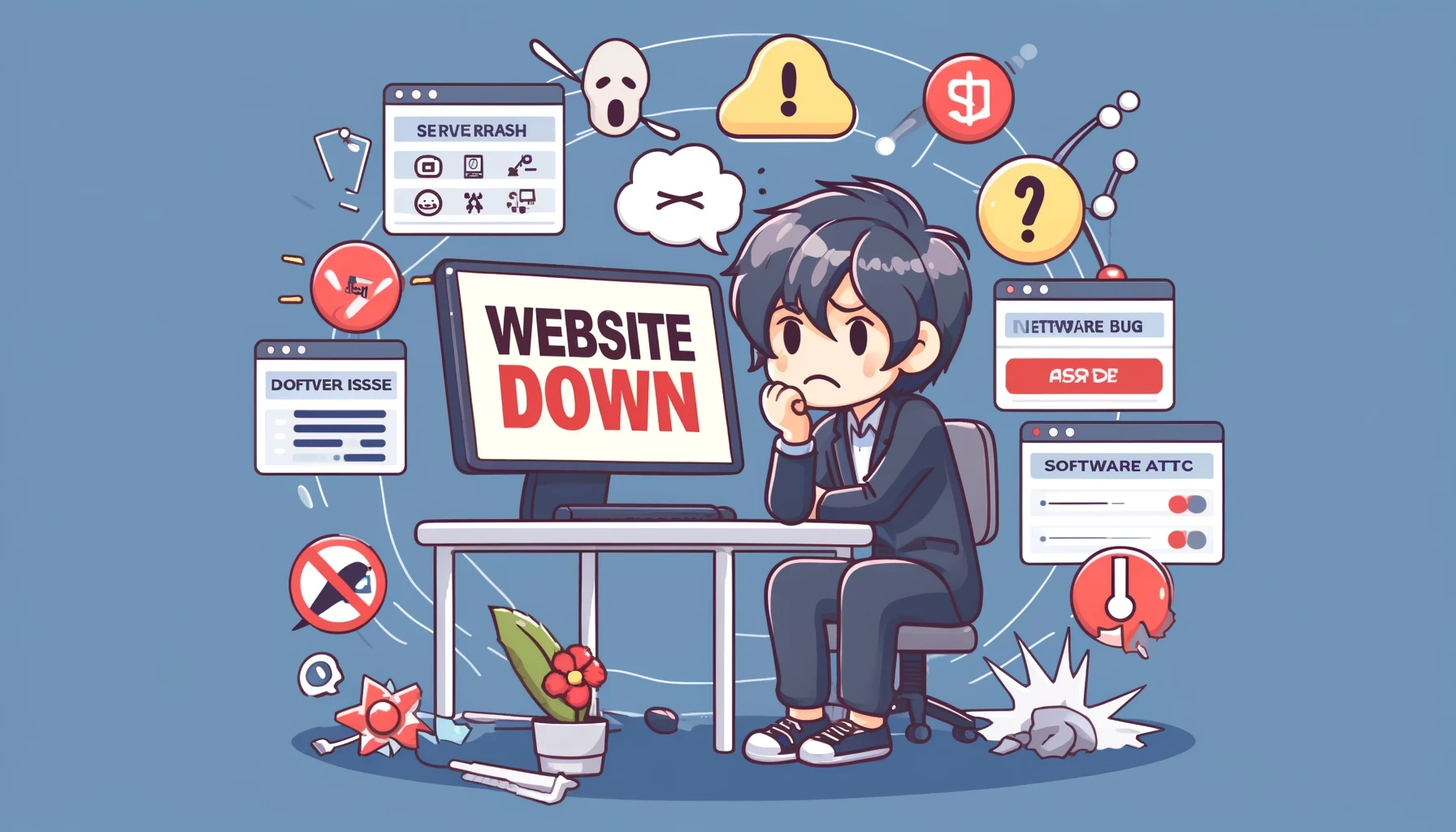What Is Website Downtime?
28 трав. 2024 р.

Website downtime refers to periods when a website is inaccessible or non-functional for its users. It can occur for various reasons, including server issues, network problems, software bugs, or maintenance activities. Understanding and preventing website downtime is crucial for maintaining a positive user experience and protecting your business's reputation.
Causes of Website Downtime
Server Issues
Server failures or crashes can render your website inaccessible. This could be due to hardware malfunctions, power outages, or overheating.
Network Problems
Issues with the network infrastructure, such as router failures or ISP problems, can lead to downtime.
Software Bugs
Errors in the website's code or software updates can cause crashes or slow performance, leading to downtime.
Maintenance Activities
Scheduled maintenance or updates can temporarily take your website offline.
DDoS Attacks
Distributed Denial of Service (DDoS) attacks flood your website with traffic, overwhelming the server and causing it to go down.
Impacts of Website Downtime
Loss of Revenue
For e-commerce websites, downtime can result in a significant loss of sales and revenue.
Damage to Reputation
Frequent downtime can damage your brand's reputation, leading to a loss of customer trust and loyalty.
Negative User Experience
Users expect websites to be available 24/7. Downtime frustrates users and can drive them to competitors.
SEO Penalties
Search engines may penalize websites with frequent downtime, affecting their ranking in search results.
Preventing Website Downtime
Reliable Hosting
Choose a reputable hosting provider that offers high uptime guarantees and robust infrastructure. Look for services that provide hosting uptime monitoring to keep track of your website's availability.
Regular Maintenance
Conduct regular maintenance and updates to ensure your website runs smoothly. Schedule maintenance during off-peak hours to minimize user impact.
Load Balancing
Implement load balancing to distribute traffic across multiple servers, reducing the risk of server overload.
Redundant Systems
Set up redundant systems and backup servers to take over in case of a primary server failure.
Monitoring and Alerts
Use uptime monitoring tools to track your website’s performance and receive alerts if downtime occurs. Tools like Pingdom, UptimeRobot, and EzUptime can help you stay informed.
DDoS Protection
Implement security measures to protect against DDoS attacks, such as firewalls, traffic filtering, and anti-DDoS services.
Conclusion
Website downtime is a critical issue that can negatively impact your business’s revenue, reputation, and user experience. By understanding the causes of downtime and implementing strategies to prevent it, you can ensure that your website remains accessible and functional for your users. Regular monitoring, reliable hosting, and proactive maintenance are key to minimizing downtime and maintaining a positive online presence.
EzUptime is a simple yet efficient Uptime Monitoring service
Learn more
